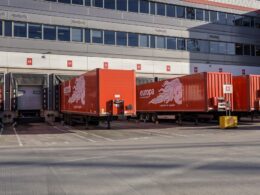Freighters and loaders have busy periods similar to those of other firms, especially retailers. The start of school marks the beginning of the holiday season, which continues until New Year’s Eve. One might make the case that December through February is the most significant shopping time. Some stores even see a 30% increase in yearly sales over Christmas. This means that the increased demand may lead to logistical challenges from September through February. This is often due to bottlenecks in the supply chain, higher shipping costs, and a general lack of efficiency. However, since this is an annual occurrence, you can take steps to ensure smooth operations. Therefore, to help you with this, we will talk about how to manage peaks during high-demand seasons.
What Are Peaks During the High-demand Season?
Peaks are periods of high demand that typically occur from September through February. This is when the demand for freight services is at its highest. Additionally, most customers expect their packages to arrive on time during this period. Due to the heightened demand during these months, shippers often find themselves scrambling to meet the needs of vendors and clients. This period can be complicated even if we ignore the ongoing global supply chain crisis. While this is a stressful situation, you can use several strategies to ensure that you remain on top of your game and remain as efficient as possible.
1. Predictive Analytics and Safety Measures
Before a busy period begins, you must first have an accurate idea of how it will affect your company. Historical data and industry trends will allow you to make sales projections. These projections will help you determine where to allocate your resources during a shortage. You should also do this if you want to future-proof your supply chain. This way, you can cut unnecessary shipments, for instance. That is to say, this is how you’ll be able to avoid diverting resources to items with questionable market potential in favour of those essential to your company’s success.
2. Making Full-load Shipments a Priority
Increased shipping risks typically cause transport delays during the high-demand seasons. Therefore, it is crucial to prioritize the transport of items that must be delivered at specific times when planning the distribution and transportation of goods. Many logistics experts try to minimize the risk by spreading their shipments across several vessels and using inland transportation. However, this can be costly and time-consuming, especially considering factors such as weather conditions. While you can mitigate some of these problems through better planning or advanced planning techniques, using full-load shipments can help alleviate these issues altogether.
3. Examine the Logistics of Your Warehouse
Optimization of every process begins with the identification of its weak spots. That being said, picking and order preparation takes up the majority of the time when it comes to logistics. This means that you must examine everything in order to find inefficiencies and adjust for times of high demand. According to experts from promoversmiami.com, minor adjustments can often have a major impact on the overall calculation. It may be possible to make your employees more time efficient by keeping an adequate supply of packing materials in a central location. This is of utmost significance over the holiday season, during discounts, or on days like Black Friday. Just make sure you and your team of operators perform an exhaustive review of each and every procedure in your storage facilities.
4. Ensure That Your Layout Configuration Is Adequate
It is crucial that the layout of a warehouse be capable of accommodating logistical activities during high-demand seasons. The amount of time spent picking is proportional to the layout of stock and picking zones. Picking the proper items and getting them out the door as fast as possible is a top priority during busy times. We suggest improving the logistics of material movement inside the warehouse to hasten the process. Additionally, adding more space for order conditioning is another option, as is making packing easier. You need demand forecasting data to see whether the needs call for a short-term shift in your layout’s configuration.
5. Keep a Sensible Spending Plan
In order to avoid financial hardship during high-demand seasons, it is important to have a well-thought-out strategy and a sufficient budget in place. This requires planning for the possibility of higher delivery costs within the allotted budget. Firstly, we recommend comparing current shipping prices to those of prior years. Secondly, you should look into the advantages of contractual rates rather than spot market rates. You should also think about using less popular but cheaper routes. For example, instead of taking a direct route from a warehouse to a nearby store, you may opt for a longer route that delivers shipments to multiple stores along the way. This will help you save on gas and reduce delivery time. Lastly, you should have an efficient inventory management system in place to minimize waste and spoilage during the holiday season.
6. Putting Modern Tools To Good Use
When there is a lot of shipping going on, Transportation Management Systems (TMS), among other such technology, can assist you in planning the best routes. TMS will track your goods and keep tabs on when they should arrive at strategic points. With this degree of supply chain transparency, you can communicate effectively with your business partners and even simulate shipping situations to envision better potential routes and ways to divide shipments. If you know how to manage peaks during high-demand seasons, you can avoid many problems that arise during peak times. In this way, everybody gains from what should be a prosperous time for businesses and consumers. That is why making the most of what you have, and planning is essential to ensure a smooth and stress-free holiday season.













